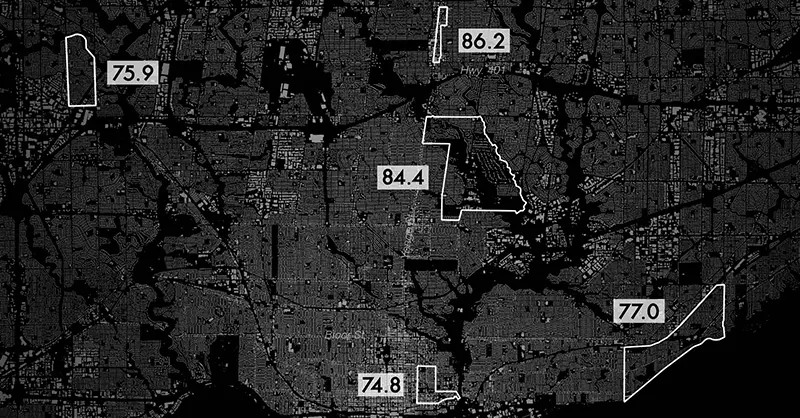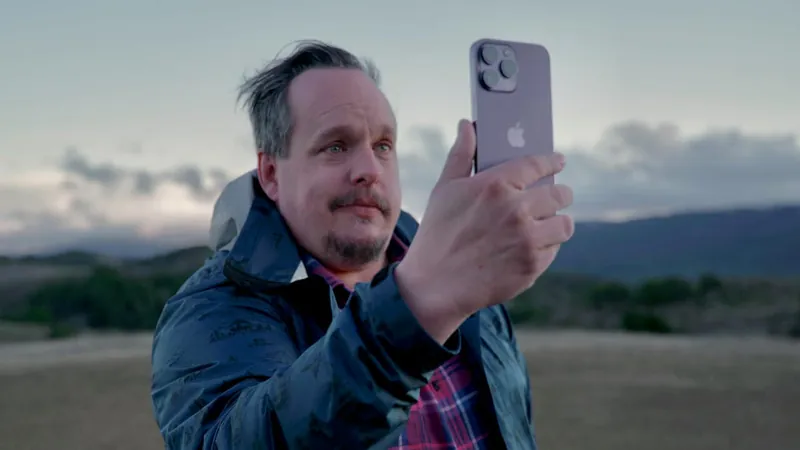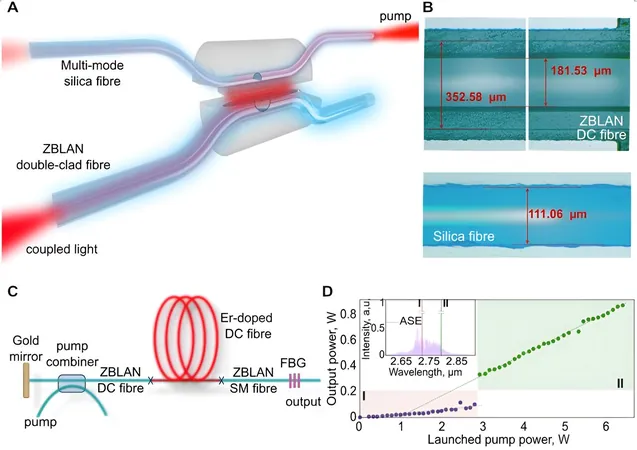
Uncrackable: How Scorpions and Sponges Are Revolutionizing Sustainable Design
2024-10-10
Author: Charlotte
Introduction
In an era where sustainability has become imperative, nature is emerging as an invaluable teacher in the quest for resilient materials. Researchers from the Weizmann Institute of Science are unveiling how ancient life forms, including scorpions and sea sponges, have developed groundbreaking design strategies over millions of years that can inspire modern sustainable technologies.
The Evolution of Materials
Prof. Daniel Wagner from the Weizmann Institute emphasizes that, "In the natural world, materials have evolved in environments defined by limited resources and harsh conditions." This evolutionary process has led to remarkably efficient structures that can inform our design of stronger, longer-lasting materials.
Biomimicry in Modern Design
The study, co-authored by Dr. Israel Greenfeld, highlights that nature has optimized the balance between strength and flexibility using innovative solutions—such as laminate construction. This approach involves layering different materials to achieve a unique combination of properties, thus enhancing durability while keeping the material lightweight. It’s a design feat that humanity can learn from as we strive to lessen waste and reduce fuel consumption.
Unique Structure of Scorpions and Sponges
Wagner and Greenfeld's research, published in Scientific Reports, dives deep into the exceptional toughness of a scorpion's outer shell (cuticle) and a sea sponge's inner skeleton (spicule). They discovered that these organisms utilize a technique known as grading—gradually transitioning properties between layers—a strategy seldom applied in human-made materials. This specific design allows for the exterior to be tougher and more resilient compared to the interior, effectively distributing stress and reducing the risk of cracking.
Key Discoveries in Fracture Mechanics
A key discovery from their work is how both the scorpion and the sponge use fracture deflection, a method of redirecting cracks to follow parallel paths along the surfaces instead of diving deeper and causing catastrophic structural failures. Their mathematical modeling of fracture mechanics revealed that achieving similar resilience in human designs without grading would require wasteful approaches, highlighting the innovative potential of biomimicry.
Integrating Nature's Features into Engineering
What’s particularly fascinating is that while transforming these biological insights into engineering solutions is complex, some features—especially those observed in sponges—can be more straightforwardly integrated into existing engineering practices. For instance, contrary to expectations, the spongy skeleton's combination of brittle layers interspersed with softer materials significantly enhances its resistance to cracking.
Collaboration between Experts
Wagner and Greenfeld’s collaboration brings together decades of research and experience; Wagner has focused on the fundamental micromechanics of both biological and synthetic materials, while Greenfeld brings a practical engineering background from the aviation sector, where efficiency is crucial. Their complementary expertise allows them to explore new avenues of sustainable design not by directly copying nature, but by drawing inspiration to expand engineering possibilities.
Implications for Sustainable Solutions
The implications of their findings could reshape various industries, from construction materials like cement to advanced composites used in aerospace. By enhancing our understanding of how natural structures achieve durability, we can innovate more sustainable solutions that meet today’s needs without compromising the resources for future generations.
Conclusion and Future Insights
Understanding the lessons nature offers isn’t just about mimicking designs; it's about reimagining what’s possible in sustainable engineering. As Wagner articulates beautifully, “Sustainability is the ability to meet the needs of the present without compromising the ability of future generations to meet their own needs.” This concept is essential as we navigate challenges in resource management, energy consumption, and material durability in the 21st century and beyond.
Stay Tuned
If you're as intrigued by nature’s incredible innovations as we are, stay tuned for more groundbreaking insights into sustainable design!









 Brasil (PT)
Brasil (PT)
 Canada (EN)
Canada (EN)
 Chile (ES)
Chile (ES)
 España (ES)
España (ES)
 France (FR)
France (FR)
 Hong Kong (EN)
Hong Kong (EN)
 Italia (IT)
Italia (IT)
 日本 (JA)
日本 (JA)
 Magyarország (HU)
Magyarország (HU)
 Norge (NO)
Norge (NO)
 Polska (PL)
Polska (PL)
 Schweiz (DE)
Schweiz (DE)
 Singapore (EN)
Singapore (EN)
 Sverige (SV)
Sverige (SV)
 Suomi (FI)
Suomi (FI)
 Türkiye (TR)
Türkiye (TR)